Physicists are currently living in the golden age of new knowledge about black holes. Since 2015, researchers have been able to obtain direct signals from merging black holes using the Laser Gravitational Wave Observatory (LIGO), while observatories such as the Event Horizon Telescope (EHT) have produced the first image of The shadow of the black hole. This year was no exception, with a new harvest of exciting and unique results that broadened our black hole’s horizons. Here, we take a look at some of the most exciting black hole results of 2020.
The Nobel Prize in Physics goes to black holes
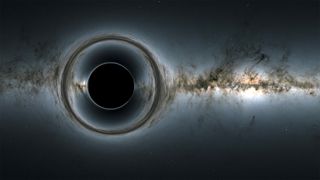
As if we are witnessing that this year has been a great year for black hole research, and it is the best scientific achievement, Nobel prizeIn October, three physicists worked to clarify the lives of these mysterious cosmic entities. Roger Penrose, of the University of Oxford in the United Kingdom, received half the award „for his discovery that black hole formation is a strong prediction for the general theory of RelativityAndrea Ghez of the University of California, Los Angeles, and Reinhard Genzel, of the University of Bonn and the Max Planck Institute for Extraterrestrial Physics in Germany, are joining the other half „to discover a compact, supermassive object in the center of our galaxy,” according to which she received the Nobel Prize in Physics at all , After Marie Curie in 1903, Maria Joybert Mayer in 1963, and Donna Strickland in 2018.
Read more: The Nobel Prize in Physics has been awarded to three scientists for discovering black holes
LEGO sees its largest black hole crash yet
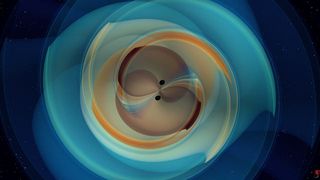
LIGO and its European counterpart, Virgo, note the existence of black holes through gravitational waves and giant ripples in the texture Free time It is emitted when massive objects are swaying. The facilities have already made a number of wonderful discoveries. But in May, the collaboration announced that it had been discovered The largest black hole collision ever, With one mass 85 times the mass of the Sun and the other 66 times the mass of the Sun, they shattered together to form a black hole 142 times the mass of the Sun. In addition to setting records, the first discovery was in the so-called „forbidden” region of medium-weight black holes. Although astronomers have seen tiny black holes roughly the size of our sun and know that massive holes millions of times the mass of the sun are in the centers of galaxies, no one has ever seen evidence of black holes in this mid-range. Exactly how it formed is still a mystery scientists are now working to unravel.
Read more: The largest black hole collision ever detected
Primordial black holes made it big
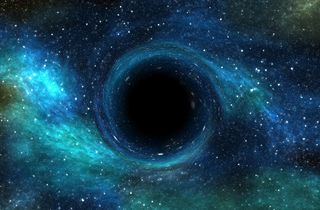
Soon after the great explosionThe universe was full of hot and turbulent radiation. The energy in some areas was dense enough that it could theoretically collapse in on itself and form a black hole. While physicists still don’t know if these entities, known as primordial black holes (PBHs), exist, they have recently thought about what would happen if they did. Several research papers, including one published in November, have suggested that these are black holes, some of which will be smaller than those formed from dying stars. Dark matter can be visualized, An unknown substance that has the effect of gravity throughout the universe. Trials are underway to search for PBHs in the coming years and either prove or disprove their existence.
Read more: Swarms of primordial black holes might populate our universe
Large black holes can exist

What if you picked up the incredibly massive black holes in the centers of galaxies and turned them into 11? That’s what the researchers suggested in a paper in September, discussing whether this might happen „Hugely large black holes,” or panels. These entities weigh at least 1 trillion times the mass of the sun, which is 10 times the largest black hole known today, and a monster with a mass of 66 billion solar masses called TON 618. Some solar panels may be in the early universe, making them another class of primordial black holes, making them It means we might be able to see Their imprint on the cosmic microwave background, Light remnant when the universe was only 380,000 years old. Others can be spotted by looking for the way in which they distort the light of distant stars in the event that there are slugs among us. This concept remains hypothetical for the time being but is attracting increasing interest.
Read more: Very large black holes that we didn’t know could form could be hiding in the universe
LIGO detects an unbalanced fusion
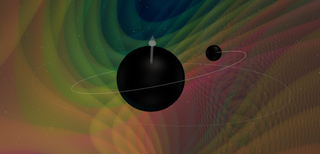
The majority of black hole binaries detected by LIGO and Virgo instruments have roughly the same mass as each other. But in April, the collaboration announced that they had noticed Its most asymmetric crash yet. The objects, which collided with each other about 2.4 billion light-years away, were about eight and 30 times the mass of our sun, respectively. This is roughly equal to the ratio of a regular Oreo fill to [that] In Mega Stuf Oreo, “Christopher Perry, Gravitational Wave Scientist at Northwestern University, Wrote in a blog post in time. Such an unexpected event was thought to be rare enough that gravitational wave installations would not see it after only a few years. The results challenge these assumptions and lead researchers to ponder them The possibility of hierarchical mergersOne black hole collides with another and the resulting remnants continue to merge with another black hole, as an explanation.
Read more: Scientists have discovered a rare smash of two mismatched black holes
Telescopes observe a star’s „spaghetti” black hole

When a massive object comes some distance from a black hole, the intense gravitational forces present there can tear the object apart into long strands of material strewn all over the place. This process, known colloquially as spaghetti, is rarely seen because most black holes are surrounded by mysterious clouds of gas and dust, the burps of previous meals as well as materials that survived eating. But in October, astronomers from the European Southern Observatory were able to hunt Cloudy star In unprecedented detail using both the Extra Large and New Technology Telescope. The violent event, known as AT 2019qiz, will give insight into these events seekers and help them better understand gravity In harsh environments.
Read more: Black holes ignited as they turned a star poor into spaghetti
The closest black hole ever detected
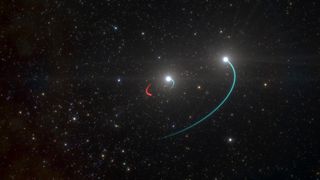
Nobody wants to get closer to a black hole (see the entry on mineral turbidity). Fortunately, the cosmic Pac-Man seen in May orbits with a pair of companion stars known as HR 6819 is located an astronomically safe distance from its partners. It lurks about 1,000 light-years from Land In the southern constellation Telescope, Newly discovered black hole Three times closer than the previous record holder. Astronomers could not directly observe the black hole, but they were able to infer its existence based on how its gravitational influence on the other two objects in the system, by stretching their orbits. Sky watchers in the Southern Hemisphere can see the stars in the HR 6819 system for themselves with the naked eye by referring to the star chart and looking at the constellation of the telescope, near the boundary with the constellation of the Peacock Pavo.
Read more: Astronomers find the closest black hole to Earth
Black holes can be balls of fluff
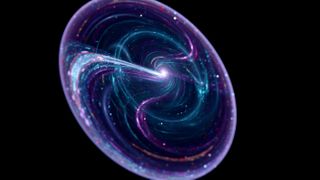
To form a black hole, Thing And the energy must collapse to a small point of infinite density. Since such infinities must be physically impossible, theorists have long sought to find a way around such a strange finding. According to string theory, which replaces all particles and forces with vibrating subatomic strings, black holes might actually turn into something more exotic – a spinning fuzzy ball of fundamental strings. In October, a study showed that if the atoms in neutron stars, a kind of star remnant that aren’t dense enough to form a black hole, were actually a collection of strings, then squeezing these strings together would actually form Not a black hole but a hazy ball That would look like the basic spinning ball mentioned above. The strange idea has not yet been fully materialized, but it is a possible alternative to dealing with infinity.
Read more: Black holes might not exist, but balls of fluff could be
Dangerous „naked” black holes may lurk in the universe
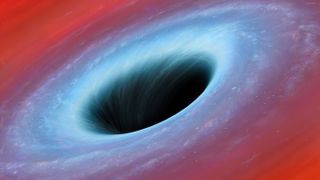
According to physicists, every black hole should be surrounded by what is known as the event horizon – the boundary from which it never comes out once you fall into it. However, since the existence of black holes was first hypothesized, researchers have questioned whether the event horizon is so necessary. Could we have a black hole without one, This is called a „naked” black hole.? This could be dangerous because known laws of physics are broken within a black hole’s event horizon, and a naked black hole will not protect this barrier. Although most theorists believe that nudity is forbidden in black holes, a paper in November suggested that there may be a way to verify with certainty. The trick is to look for differences in accretion disks, or the rings of gas and dust that formed when a black hole is fed up, which could indicate a distinct difference between naked and regular black holes.
Read more: Are there dangerous „naked” black holes in the universe?
A treasure trove of black holes
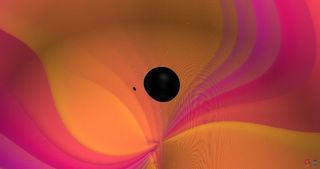
Christmas came early this year for black hole scientists. In October, the collaboration overseeing LIGO and its European counterpart Virgo released a new, ample catalog of Dozens of gravitational wave signals It was discovered between April and September 2019. The 39 events included many interesting findings, such as the massive black hole merging resulting in remnants of 142 solar masses, the highly unbalanced event with thirty-eight times the masses of the Sun and a mysterious object that appeared to be either a black hole Small hole or large hole Neutron star. The researchers were pleased with the data, which showed that the facilities were capturing on average one new signal every five days and planning to use it to better understand the behavior and frequency of black hole mergers.
Read more: Scientists have just discovered the largest neutron star (or the smallest black hole)
Originally published on Live Science.

„Organizator. Scriitor general. Prieten al animalelor de pretutindeni. Specialist în cultură pop. Expert în internet amator. Explorator.”